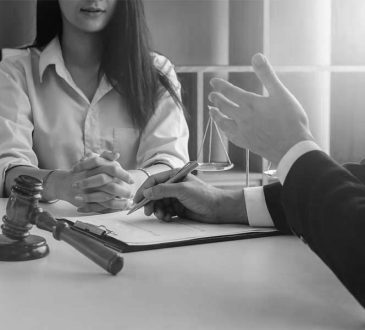
Criminal charges don’t arrive with a manual. One moment, life feels normal; the next, there’s a citation, an arrest, or a court date in Williamson County (or, for a small part of the city, Travis County).
This Cedar Park Criminal Defense guide explains what residents can expect—from the types of charges commonly filed to how the court process actually works, how plea bargaining functions under Texas law, and what sentencing might look like in 2025.
The goal is simple: clarity and leverage. If someone needs to take the next step, they should act quickly. Click here to connect with a local Cedar Park defense attorney, or keep reading to get oriented before the first hearing.
Types of criminal charges residents face in Cedar Park
Cedar Park sees the same broad range of cases as other fast-growing Texas suburbs, with a few local patterns. Because most of Cedar Park sits in Williamson County (with a portion in Travis County), cases are typically filed and prosecuted under those counties’ policies and courtroom norms.
Common misdemeanors
- Traffic-related offenses: speeding, no insurance, and Class C violations are handled in municipal court. Driving While Intoxicated (first offense) is a Class B misdemeanor in most instances, but can be enhanced to Class A for a high blood alcohol concentration.
- Assault causing bodily injury (often domestic/family violence): a Class A misdemeanor with serious collateral consequences, including a firearm prohibition if there’s a family violence finding.
- Marijuana and other low-level drug possession: still charged, though outcomes vary based on quantity, criminal history, and county diversion options.
- Theft under $2,500: thresholds determine charge levels: many shoplifting cases start as misdemeanors.
- Disorderly conduct, public intoxication, criminal trespass: often tied to specific incidents (bars, events, neighborhood disputes).
Felony charges
- Repeat DWI (third or more), burglary, robbery, unlawful possession of a firearm by a felon, and aggravated assault are among the felony cases seen.
- Drug delivery/manufacture or possession of larger quantities.
- White-collar crimes: credit card abuse, fraud, forgery, and identity theft, especially with online components.
Local wrinkle: which courthouse?
- Offenses inside Cedar Park’s Williamson County area generally go to Williamson County courts in Georgetown (county courts at law for misdemeanors and district courts for felonies).
- Offenses in the small portion of Cedar Park that lies in Travis County go to Travis County courts in Austin.
Knowing the charge level and where it will be prosecuted helps set expectations for bond, discovery pace, and plea policies.
Understanding the local court process step by step
Every case follows a path, and a clear map reduces anxiety and mistakes.
1) Stop, investigation, and arrest
A case often starts with a traffic stop or a call for service. Officers may run field sobriety tests, collect witness statements, or seize evidence. If probable cause exists, they arrest: otherwise, they might issue a citation for Class C offenses.
2) Booking and magistration
After arrest, defendants are taken to jail for booking. Within roughly 48 hours, a magistrate advises them of the charge, sets bond, and issues conditions (no-contact orders, ignition interlock, drug testing). Quick action here can prevent unnecessary days in custody.
3) Bond and release options
- Cash bond: pay the full amount: refundable (minus fees) if all court settings are met.
- Surety bond: a bondsman guarantees the bond for a fee (usually nonrefundable).
- Personal bond (more common in Travis County): release based on promise to appear, often with conditions.
4) Arraignment and first settings
Arraignment formalizes the charge and starts the clock. Defendants enter an initial plea (often “not guilty”), and the court sets deadlines for discovery and motions.
5) Discovery and investigation
Texas requires prosecutors to disclose police reports, videos, lab results, and witness information. Defense counsel investigates independently, visiting scenes, pulling surveillance footage before it’s overwritten, interviewing witnesses, and, when needed, hiring experts (accident reconstruction, toxicology, digital forensics).
6) Pretrial motions
Common motions include motions to suppress (challenging stops, searches, or statements), and motions to exclude unreliable or prejudicial evidence. In DWI cases, counsel may attack field sobriety test administration or breath/blood draw protocols.
7) Plea negotiations or trial
Most cases resolve by agreement. If negotiations stall or the defense wants a verdict, the case goes to trial. In Texas, defendants may elect judge or jury trials for most charges. Trial prep includes subpoenaing witnesses, filing exhibit lists, and locking down any plea offers’ expiration dates.
8) Sentencing
If there’s a conviction (by plea or verdict), the court proceeds to sentencing. Texas allows separate punishment proceedings. Character witnesses, mitigation packets, treatment records, and risk assessments can influence outcomes.
9) After the case: appeal, expunction, nondisclosure
- Appeals challenge legal errors.
- Expunctions permanently remove certain arrests from public records when the statute allows (dismissals, no-bills, acquittals, some non-charges after arrest).
- Orders of nondisclosure seal records of some deferred adjudication cases. Timing and eligibility vary by offense.
Practical tip: calendars matter. Missing a setting can trigger a warrant, easily avoided with counsel tracking dates and conditions.
How plea bargaining works under Texas law
Texas plea bargaining is structured but flexible, and local practices in Williamson and Travis Counties shape the range of outcomes.
Types of plea agreements
- Charge bargaining: the prosecutor reduces or amends the charge (e.g., felony to misdemeanor) in exchange for a plea.
- Sentence bargaining: the parties agree to a specific sentence or a cap: the judge must approve it.
- Deferred adjudication: the defendant pleads guilty/no contest, but the court withholds a finding of guilt and places the person on community supervision. Successful completion avoids a final conviction, though some collateral effects still apply.
- Pretrial diversion: an agreement to dismiss upon completing conditions, usually reserved for lower-level, first-time cases.
Judge’s role and admonishments
Even with a deal, judges are not rubber stamps. They must ensure the plea is voluntary, that defendants understand rights being waived, and that there’s a factual basis. Written admonishments cover immigration consequences, driver’s license suspensions, registration requirements (for certain offenses), and firearm restrictions.
Open pleas and “slow pleas”
If negotiations stall, defendants may enter an open plea to the judge with no agreement on punishment, present mitigation, and ask the court for leniency. In a “slow plea,” the parties present evidence but waive a jury, common when the law favors a judge deciding punishment.
Collateral consequences
Beyond jail or probation, plea outcomes can affect professional licenses, immigration status, federal background checks, and housing. In family violence cases, even deferred outcomes can trigger firearm possession bans. That’s why smart bargaining considers more than just the headline sentence.
Bottom line: Early, informed negotiation improves leverage, especially when paired with credible defense investigation.
Sentencing guidelines and potential penalties in 2025
Texas law sets statutory ranges, and 2025 isn’t expected to change the core brackets. Judges and juries sentence within these ranges unless enhancements or mandatory minimums apply.
Misdemeanors
- Class C: fine up to $500 (no jail). Typical for traffic and ordinance violations.
- Class B: up to 180 days in jail and up to a $2,000 fine (e.g., first DWI, some possession cases).
- Class A: up to 1 year in county jail and up to a $4,000 fine (e.g., assault causing bodily injury, DWI with BAC ≥ 0.15).
Felonies
- State Jail Felony: 180 days to 2 years in a state jail facility and up to a $10,000 fine.
- Third Degree: 2–10 years in prison and up to a $10,000 fine.
- Second Degree: 2–20 years in prison and up to a $10,000 fine.
- First Degree: 5–99 years or life and up to a $10,000 fine.
- Capital: life without parole or death (rare, highly specific).
Enhancements and special rules
- Repeat-offender enhancements can elevate ranges.
- Drug-free zones, use of a deadly weapon, and offense against a family/household member can trigger stiffer consequences.
- DWI specifics: first offense typically Class B with a minimum 72 hours in jail: BAC ≥ 0.15 elevates to Class A: second offense is Class A with a minimum 30 days: third is a felony (2–10 years). License suspensions, ignition interlock, and alcohol monitoring may be required.
- Community supervision (probation) is often available and can include treatment, classes, community service, and fines. Deferred adjudication is available in many cases, including certain first-offense DWIs under limited conditions, but not for all offenses (e.g., some violent crimes).
Practical sentencing factors
Courts weigh criminal history, harm to any victim, compliance with bond conditions, treatment engagement, and the credibility of mitigation. A well-documented plan, employment, counseling, restitution, can move outcomes meaningfully within the statutory range.




